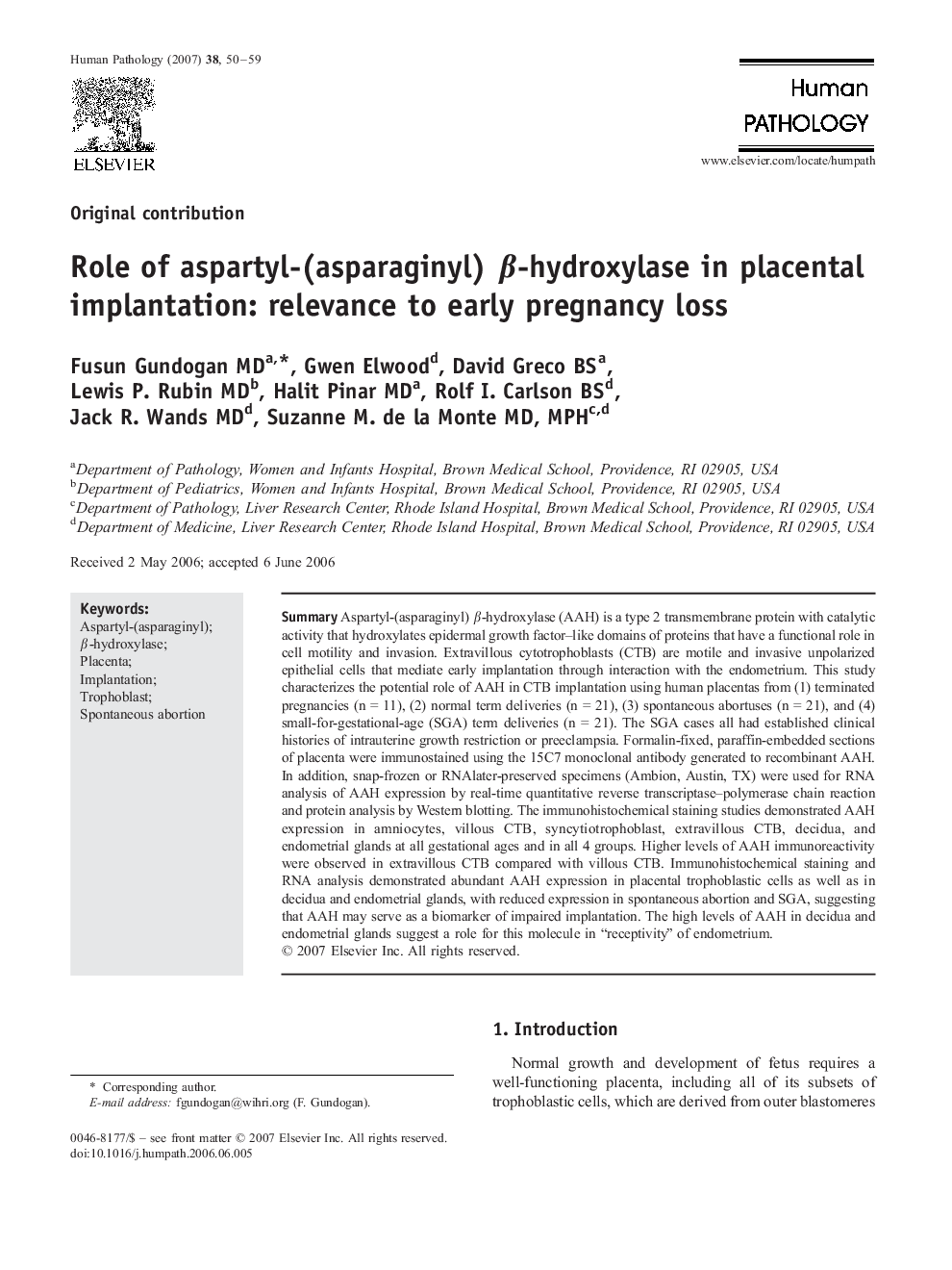| Article ID | Journal | Published Year | Pages | File Type |
|---|---|---|---|---|
| 4135540 | Human Pathology | 2007 | 10 Pages |
SummaryAspartyl-(asparaginyl) β-hydroxylase (AAH) is a type 2 transmembrane protein with catalytic activity that hydroxylates epidermal growth factor–like domains of proteins that have a functional role in cell motility and invasion. Extravillous cytotrophoblasts (CTB) are motile and invasive unpolarized epithelial cells that mediate early implantation through interaction with the endometrium. This study characterizes the potential role of AAH in CTB implantation using human placentas from (1) terminated pregnancies (n = 11), (2) normal term deliveries (n = 21), (3) spontaneous abortuses (n = 21), and (4) small-for-gestational-age (SGA) term deliveries (n = 21). The SGA cases all had established clinical histories of intrauterine growth restriction or preeclampsia. Formalin-fixed, paraffin-embedded sections of placenta were immunostained using the 15C7 monoclonal antibody generated to recombinant AAH. In addition, snap-frozen or RNAlater-preserved specimens (Ambion, Austin, TX) were used for RNA analysis of AAH expression by real-time quantitative reverse transcriptase–polymerase chain reaction and protein analysis by Western blotting. The immunohistochemical staining studies demonstrated AAH expression in amniocytes, villous CTB, syncytiotrophoblast, extravillous CTB, decidua, and endometrial glands at all gestational ages and in all 4 groups. Higher levels of AAH immunoreactivity were observed in extravillous CTB compared with villous CTB. Immunohistochemical staining and RNA analysis demonstrated abundant AAH expression in placental trophoblastic cells as well as in decidua and endometrial glands, with reduced expression in spontaneous abortion and SGA, suggesting that AAH may serve as a biomarker of impaired implantation. The high levels of AAH in decidua and endometrial glands suggest a role for this molecule in “receptivity” of endometrium.
